SCIENTIFIC PROOF
SUPPORTING THIS

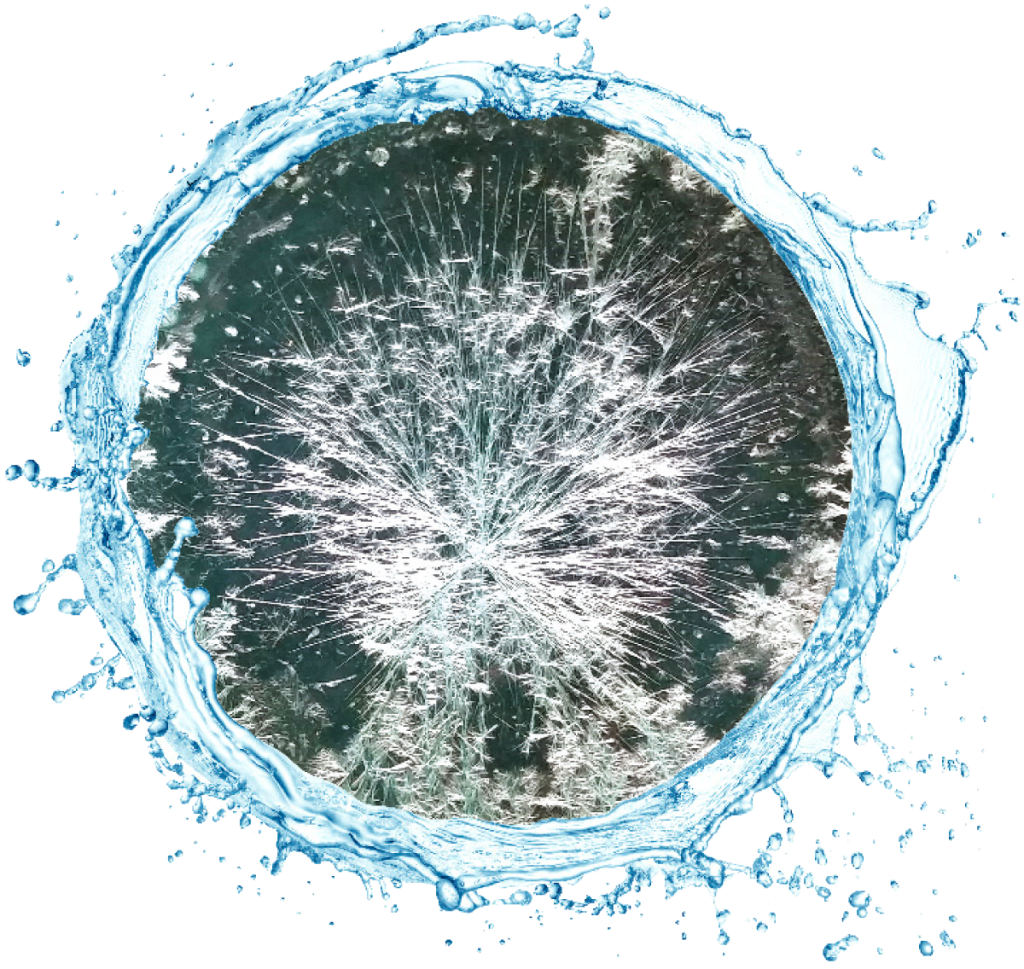
It is a scientific qualitative observation and diagnosis method used to verify the energy level of any biological sample: plant, fruit, soil, vegetable, etc. Therefore, it is able to highlight not only the deficiencies or unbalances of the moment, as takes place with common laboratory investigations, but trends for the future as well.
It is a qualitative analysis of the land to assess the balance, the structure, the organic reserve, the biological activity and the formation of humus. Chromatography points out, with a sort of photograph, the relationship between organic substance, minerals and biological activity of a soil, which is helpful for assessing the dynamics and vitality.
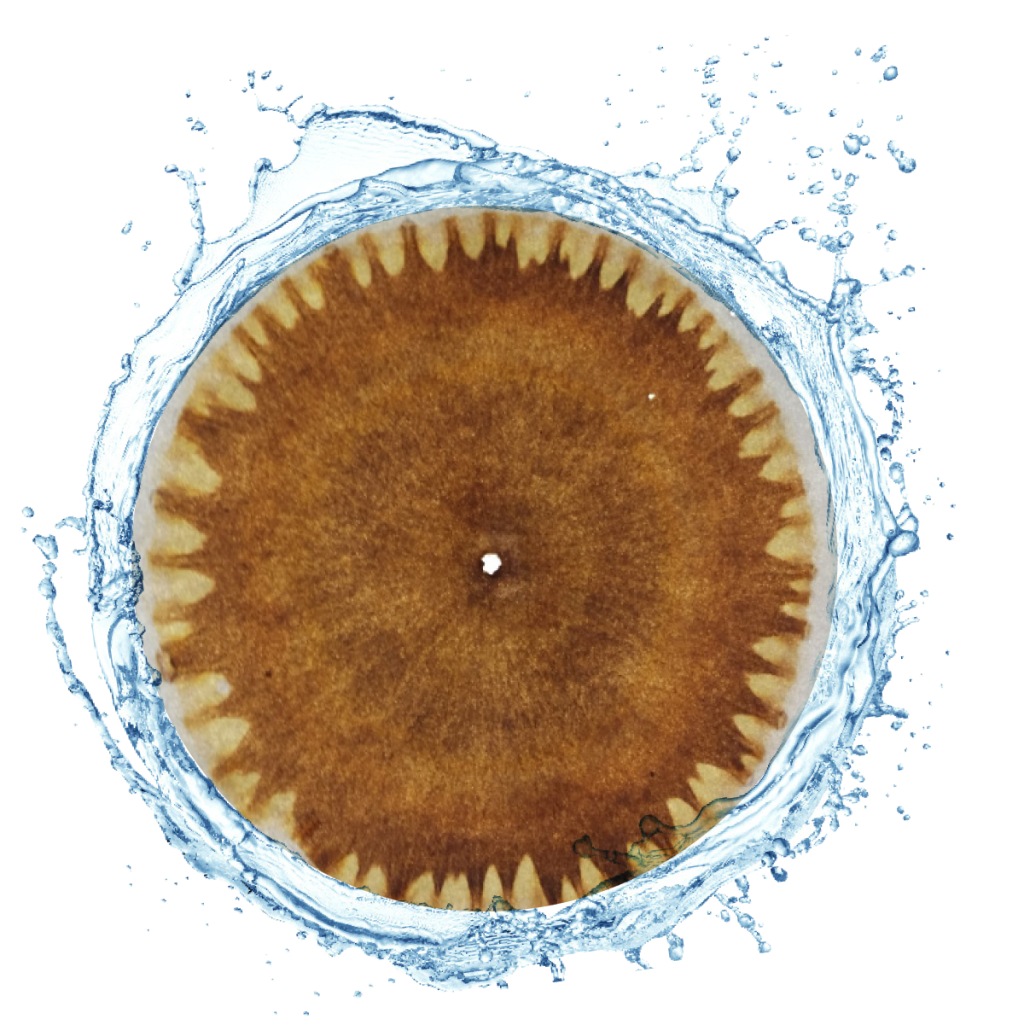
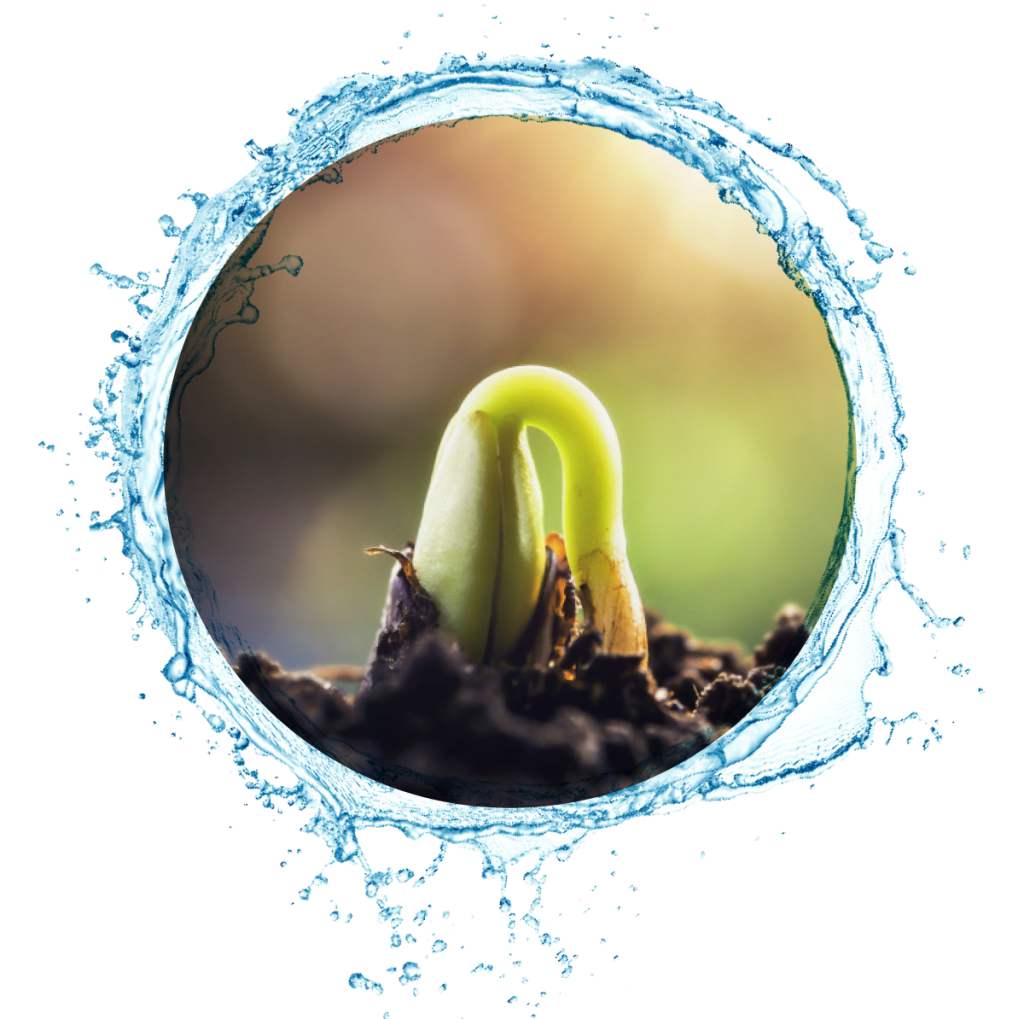
The morphological analysis is a method of knowledge based on the study of shapes. Every plant is made up of different functional organs with the purpose of surviving, growing and reproducing itself: the roots, leaves and flowers show the tendencies the plant will have through morphological analysis.
Field tests are a basic strategic step aimed at empiracally observing and evaluating the products in order to be able to best perfect their methods of use and, at the same time, to transfer the technical innovation to the farms.
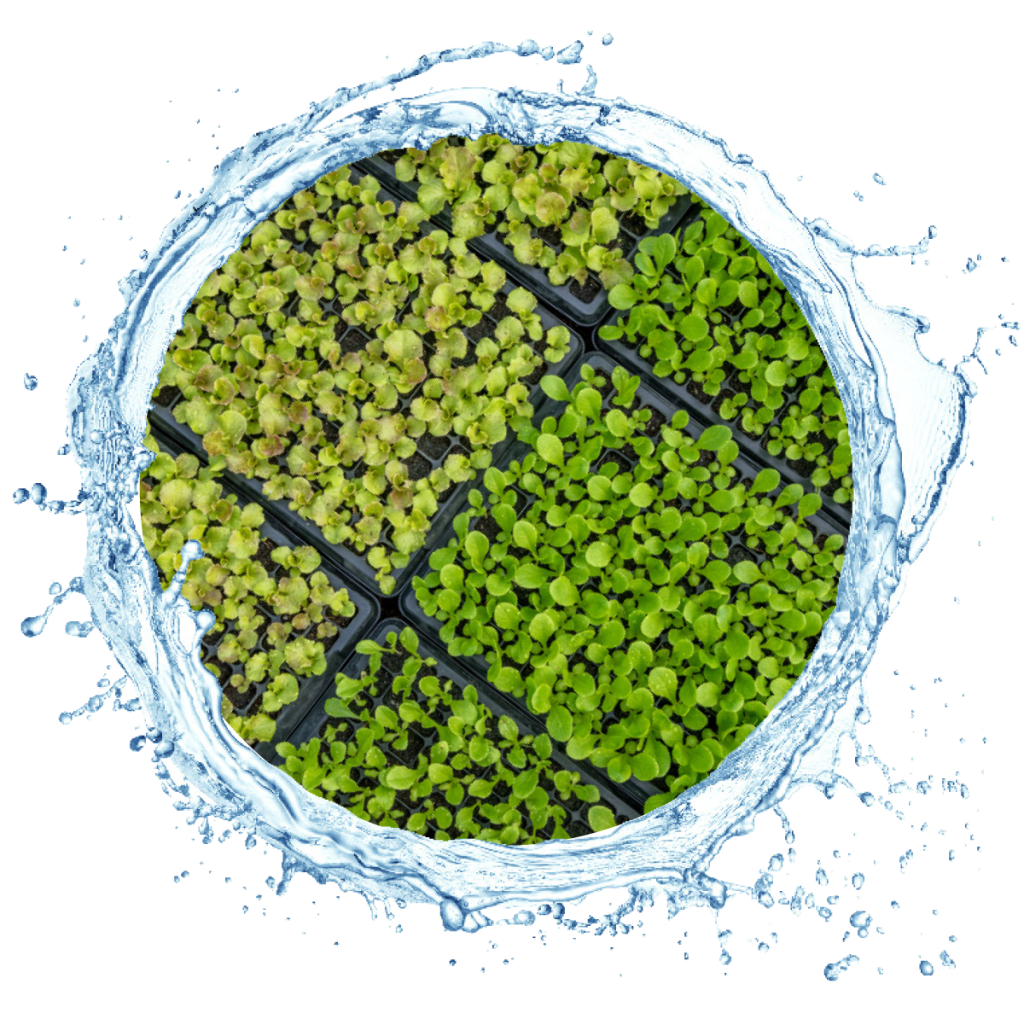

5. METABOLIC PROFILING
This is the best analysis method for ascertaining the state of health of a biological system, the whole of all the metabolites, the substances that result from the chemical reactions that take place in the plant. Unlike data of genic expression, the metabolic profile can provide a snapshot of its physiology to get a more complete overview.
FIND OUT MORE ABOUT OVERWATER

1. METHOD:
SENSITIVE CRYSTALLIZATION ON WATER SAMPLES
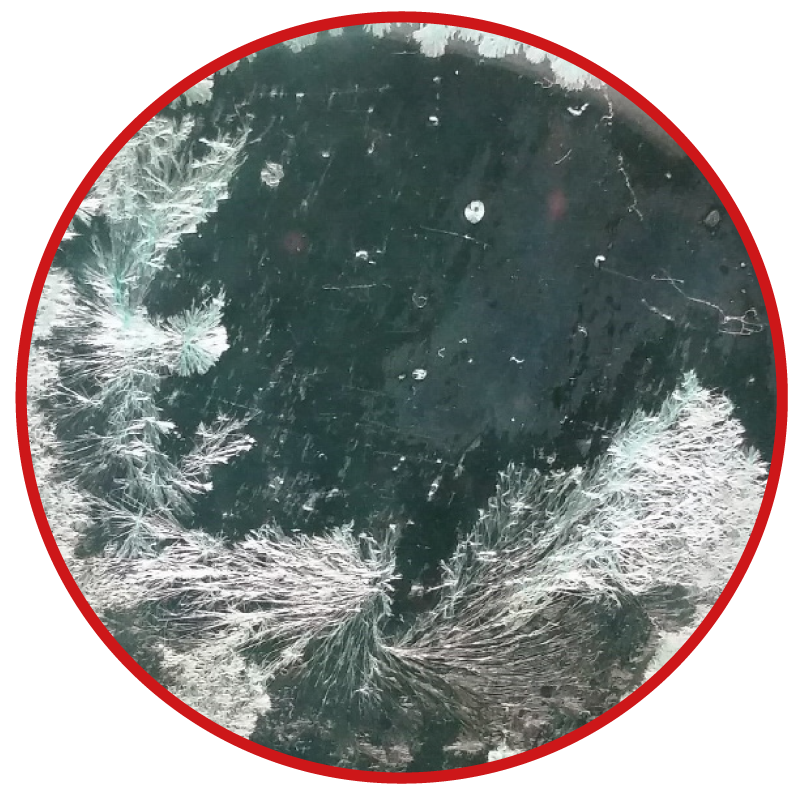
UNTREATED water
Appears totally incomplete, with confused and chaotic structures in the bottom half and on the left of the figure, without formations in a large part of the figure.
FROM WATER
SUPPLY

Water treated with OverWater
Is broad, balanced and symmetrical, with a centre (fulcrum) clearly defined and a nice radial pattern of ramifications extended over a large part of the figure, which is much more active, tidier and neater.

UNTREATED water
Is totally “flat”, creates long, ultra-thin parallel series. Reduced bioavailability for the plant
WITH ADDITION OF
AMMONIUM SULPHATE
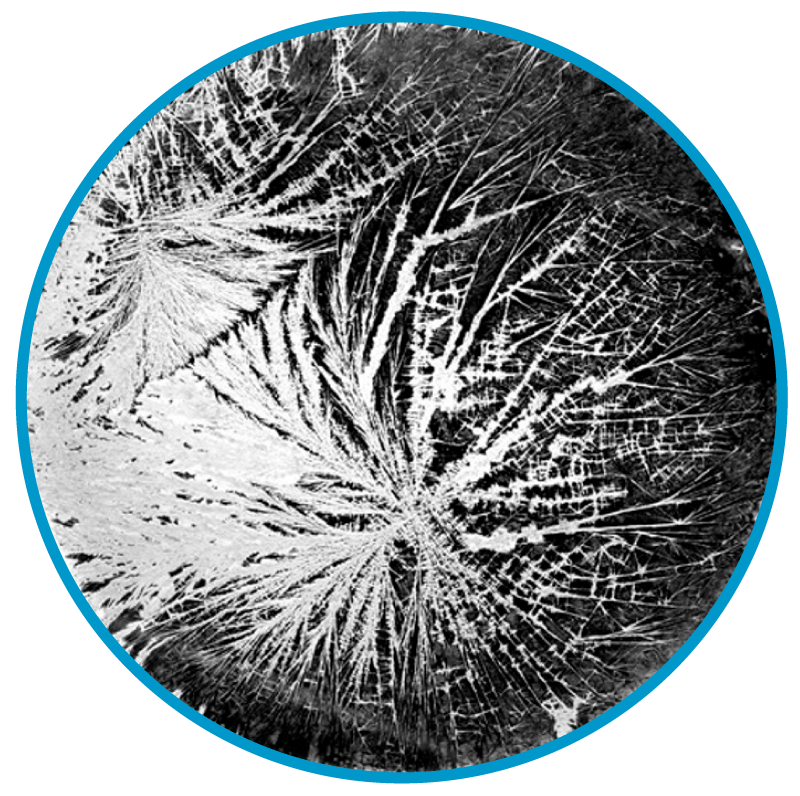
Water treated with OverWater
The result is evident: it is as if it has taken shape, almost as if it has become “alive”. As you can see, it creates a true centre (actually two) with a real and consistent system of primary and secondary ramifications.


2. METHOD:
HORIZONTAL CHROMATOGRAPHY ON SOIL SAMPLES
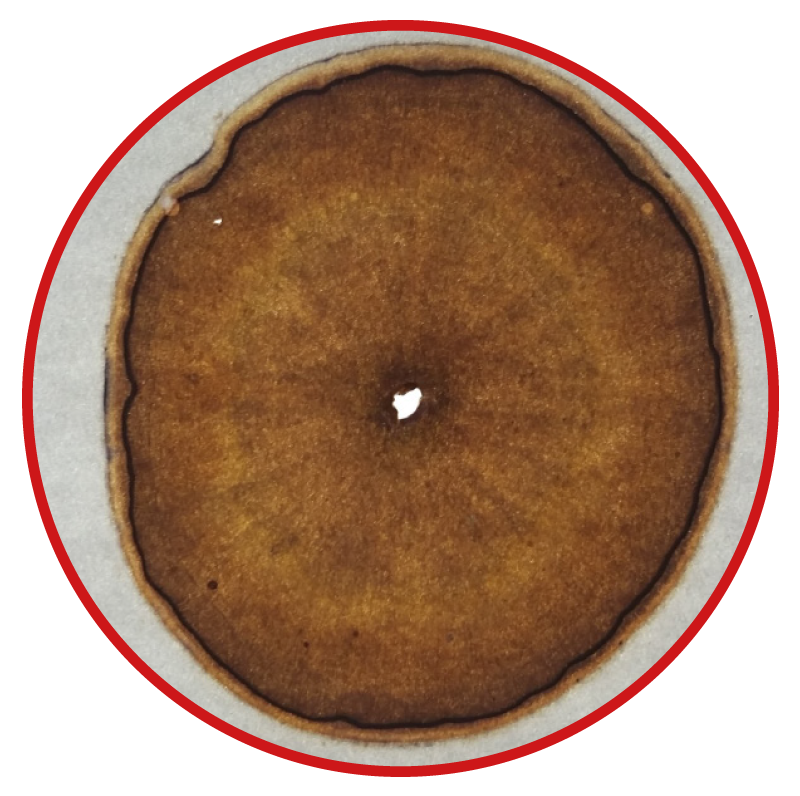
UNTREATED soil
“Flat” image, scarce diversification in concentric crowns, reduced radial structure of the area inside (compression and scarce permeability of the soil) and, above all, critical deficiencies in the external crown (biological activity, enzymes, humus).
FROM INTEGRATED
PRODUCTION

Soil treated with OverWater
Obvious lightening and articulation both in the internal restructuring as much as in the development of the cortical crown, which means that the water of the OverWater device was able to mobilize and activate even the scarce biological resources of the soil.
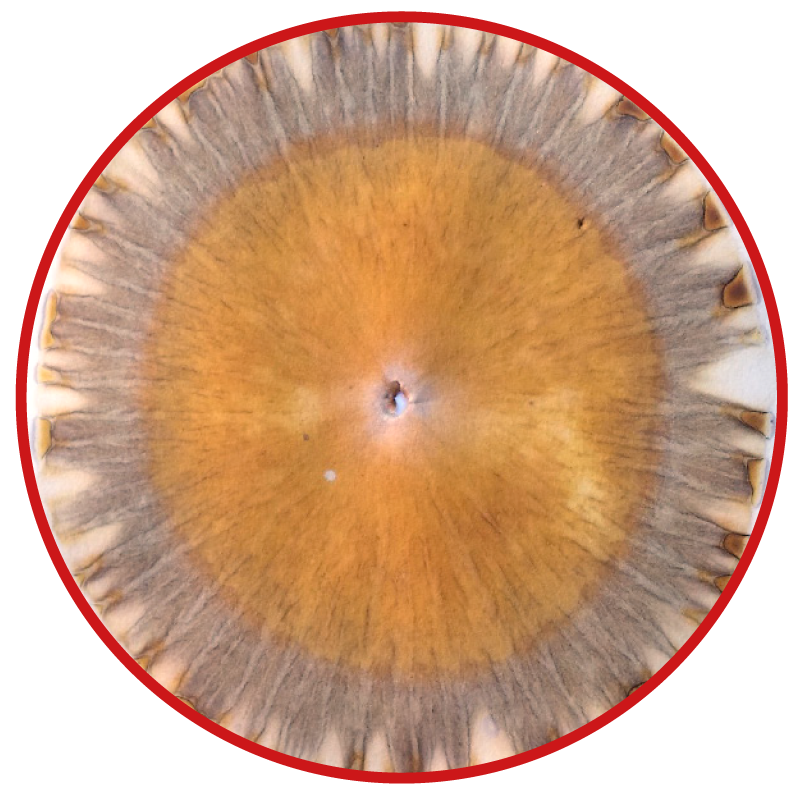
UNTREATED soil
The sample shows profound differences compared to the previous chromatograms, confirming a soil with greater organic substance content.
FROM BIODYNAMIC
PRODUCTION
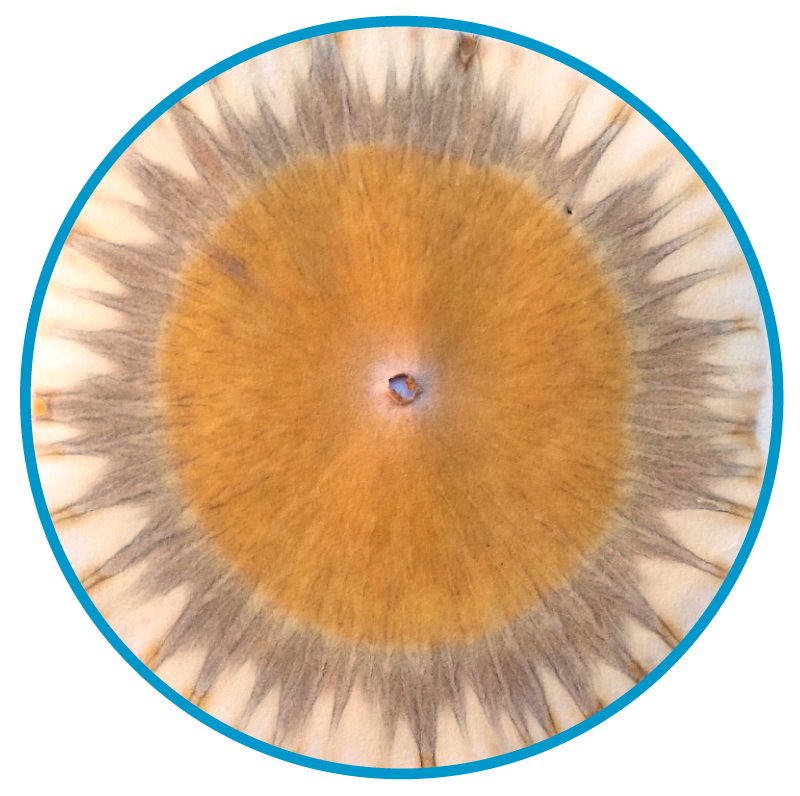
Soil treated with OverWater
The “external area” develops in an obvious manner (enzymatic activity) to form humic and fulvic acids and to improve soil quality.
The effectiveness of the OverWater device clearly manifests itself in all samples. This means that the treated water mobilized – solubilized – made available the noble (useful) component of the soil.
It also improves the bioavailability (absorption) of the composts and phytosanitary products.



3. METHOD:
MORPHOLOGY AND DEVELOPMENT ASSESSMENT OF THE SEEDLINGS*
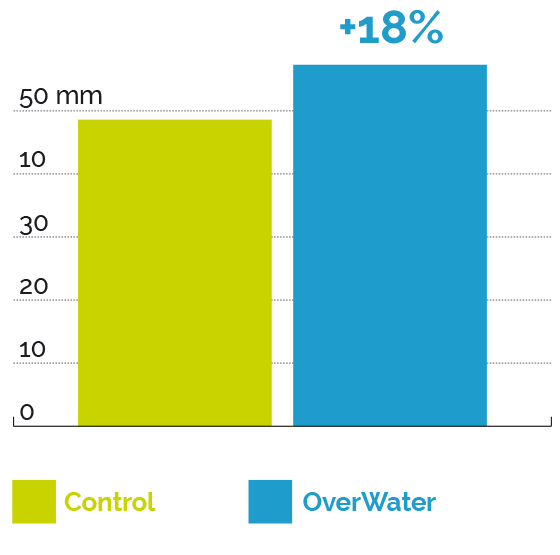
EPICOTYL LENGTH
seedlings* after 144 hours
* Wheat (bread and durum) and salad tomato

AVERAGE ROOT SYSTEM GROWTH
seedlings* after 48, 96 and 144 hours
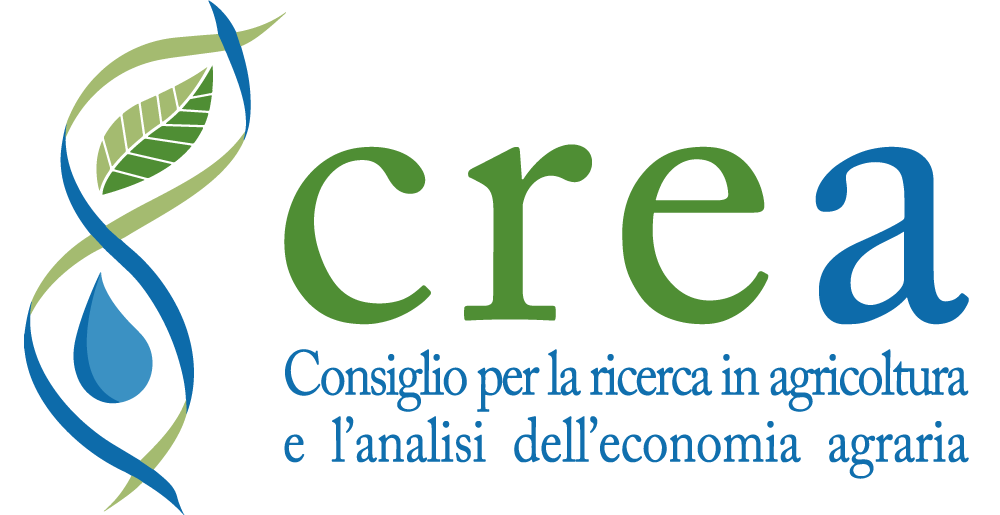
“Using the water treated with the OverWater
device brought about a significant increase in the length of the root”
At CREA (Italian Council for Agricultural Research), morphology and growth tests were conducted, which confirmed the positive influence of the OverWater device on the development of the aerial and root parts of young seedlings*.
Using water treated with OverWater brought about a significant increase supporting the topics discussed in all varieties and species considered: “they simply grow more”.
Specifically, the root system, the essential organ for greater growth efficiency of the plant and exploration of the substrate develops to a greater extent, with a higher ability to absorb water and nutritional substances.


4. METHOD:
FIELD TESTS – ASSESSMENT OF RESPONSE TO WATER STRESS
Empirical tests confirm the greater resistance of the plants treated with OverWater.
The pH, conductivity, and content of sodium and carbonates are insufficient for establishing water quality. Instead, it is necessary to consider parameters such as shape and order, which always entail chemical-physical changes, corroborated also by spectrofluorometry readings.
One of the tests performed examined the percentage of live tomato seedlings by single day after the last reading made 144 hours after seeding, afterwards with progressive drying up of the water.
The following chart shows a +135% survival rate of the seedlings treated with OverWater.
A 20% reduction of water is possible thanks to the greater resistance to water stress
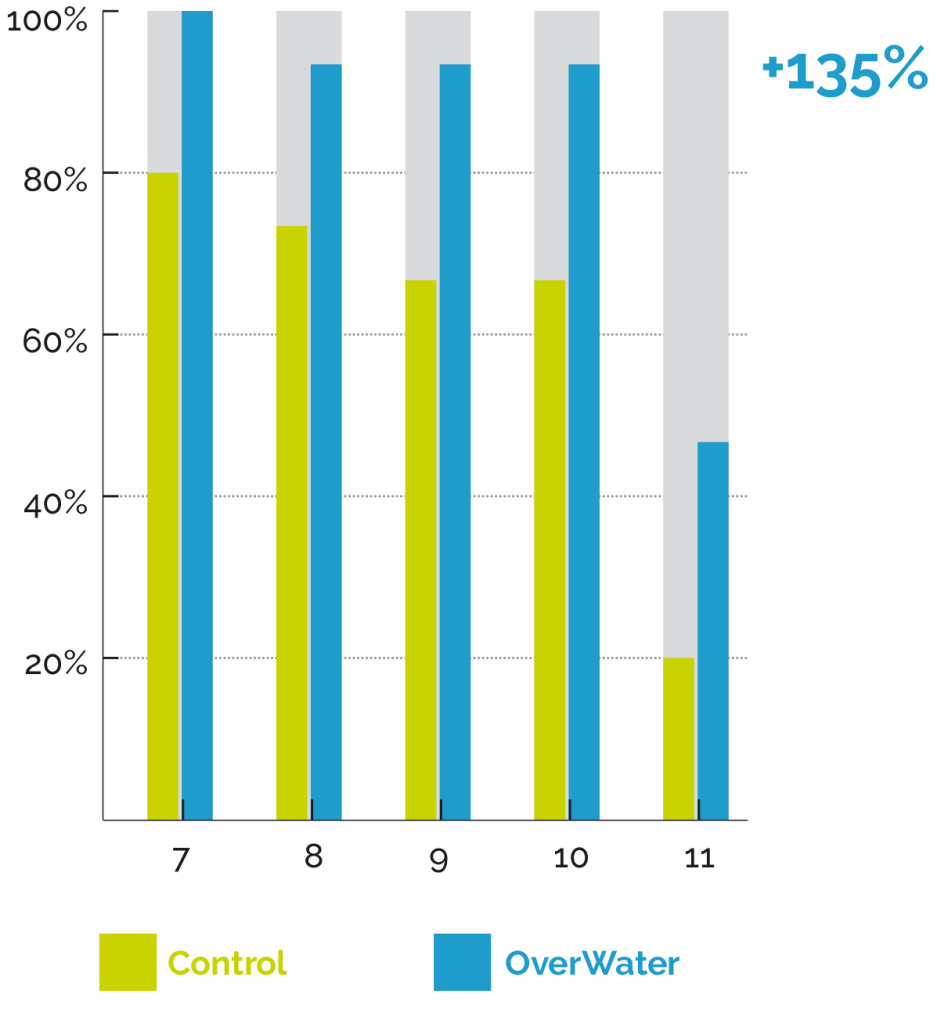
SEEDLING SURVIVAL FROM WATER STRESS
The chart shows the number (in percentage) of live seedlings after a defined period of 11 days in total absence of water.


5. METHOD:
METABOLIC PROFILING
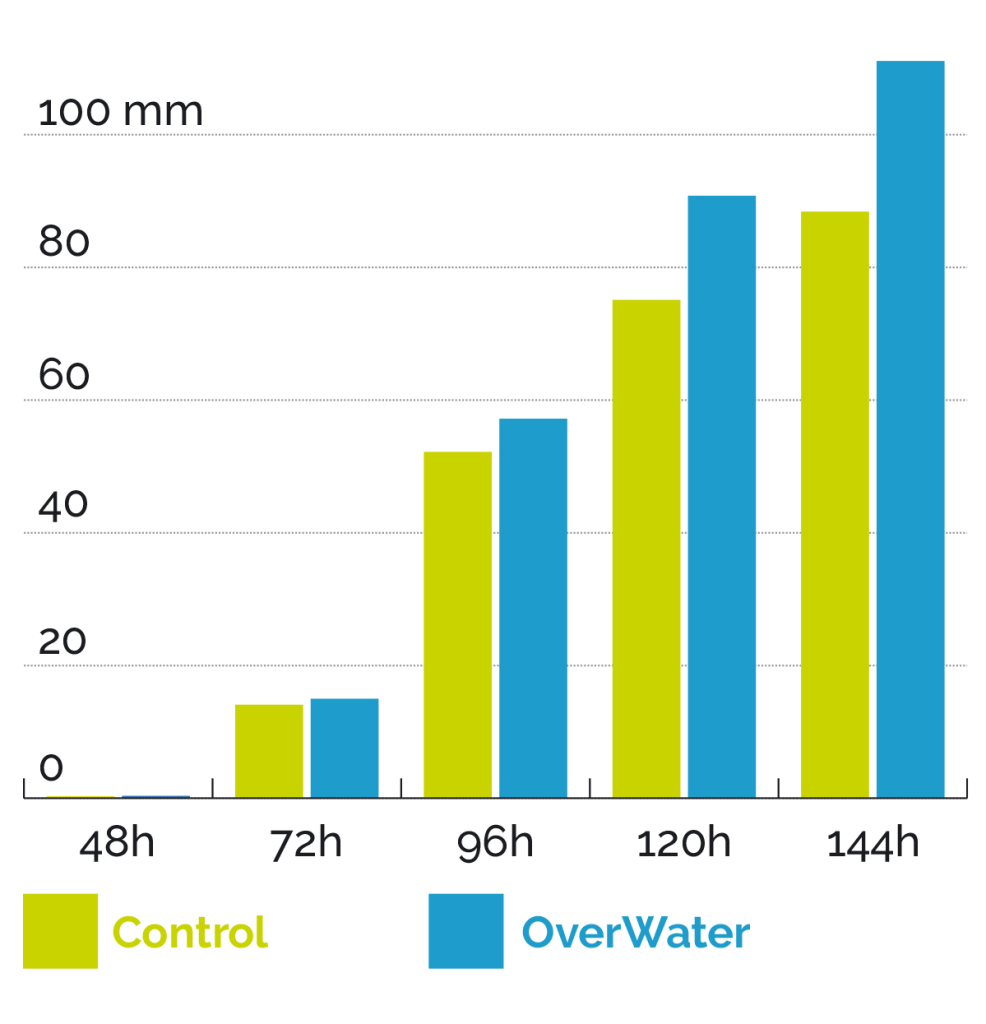
GROWTH OF THE TAPROOT
measurements taken over a 6-day period
At CREA-CI (Research Centre for Cereal Growing and Industrial Crops), the Metabolic Profiling (polar and apolar metabolites) analyses on seeds, roots and epicotyls showed a significant effect of using water treated with OverWater in relation to the variations of the metabolic mechanisms.
The most interesting data that emerges mainly concerns the sugars.
In plants, the sugars are produced by photosynthesis and also function as hormones to send signals to the genes involved in development and growth.
OverWater water intervenes on the photosynthesis process to boost greater production of essential compounds for the plant.
